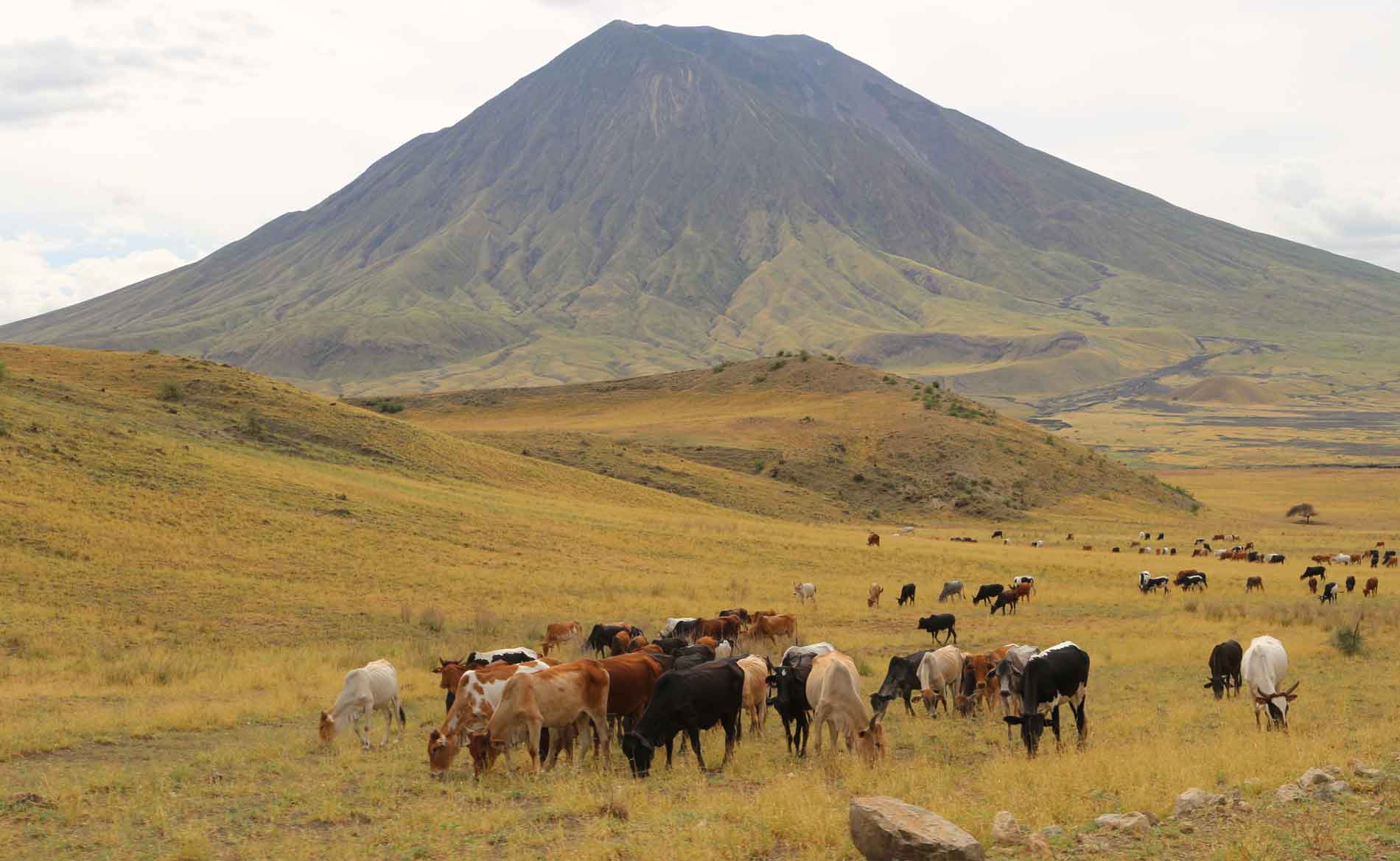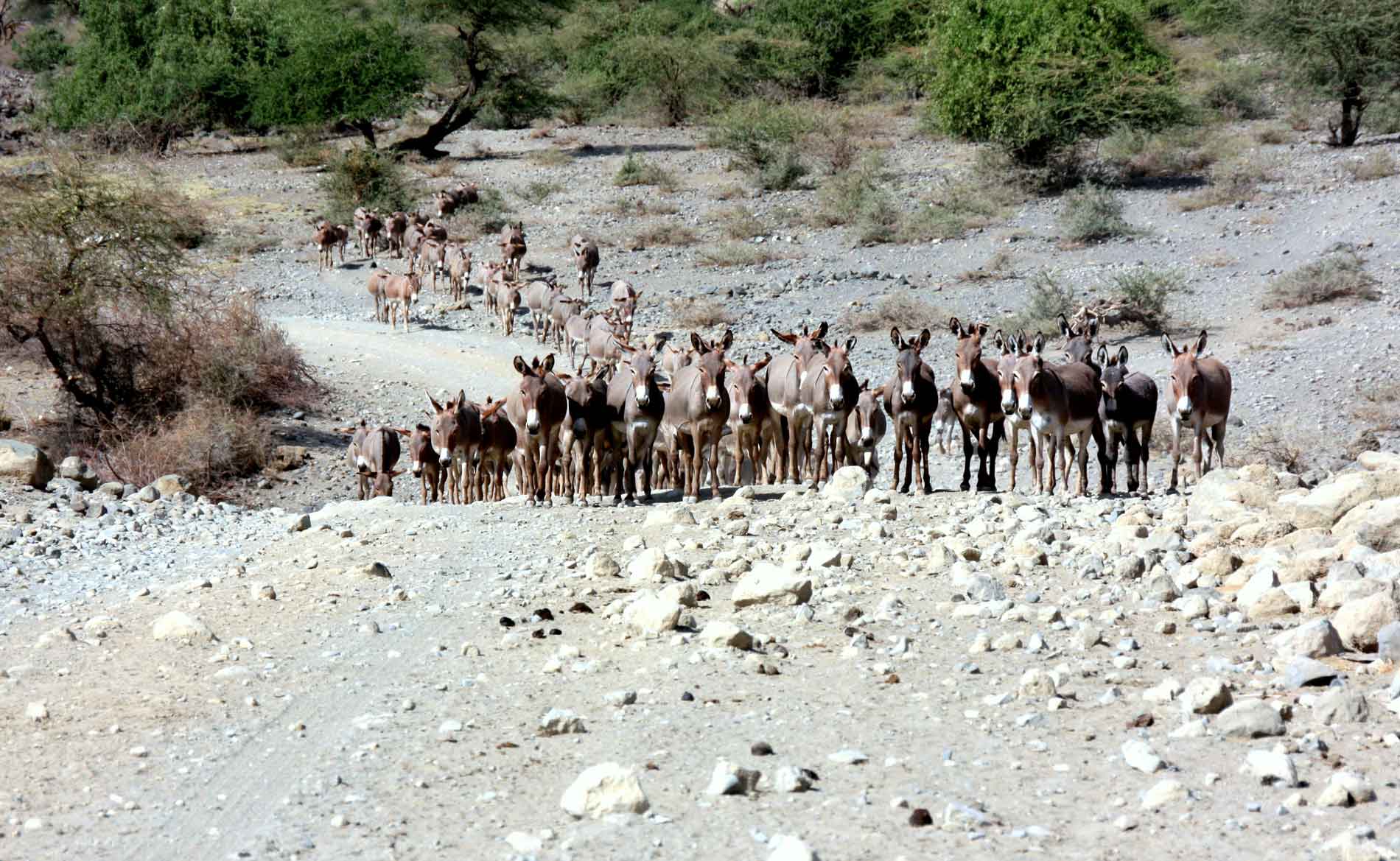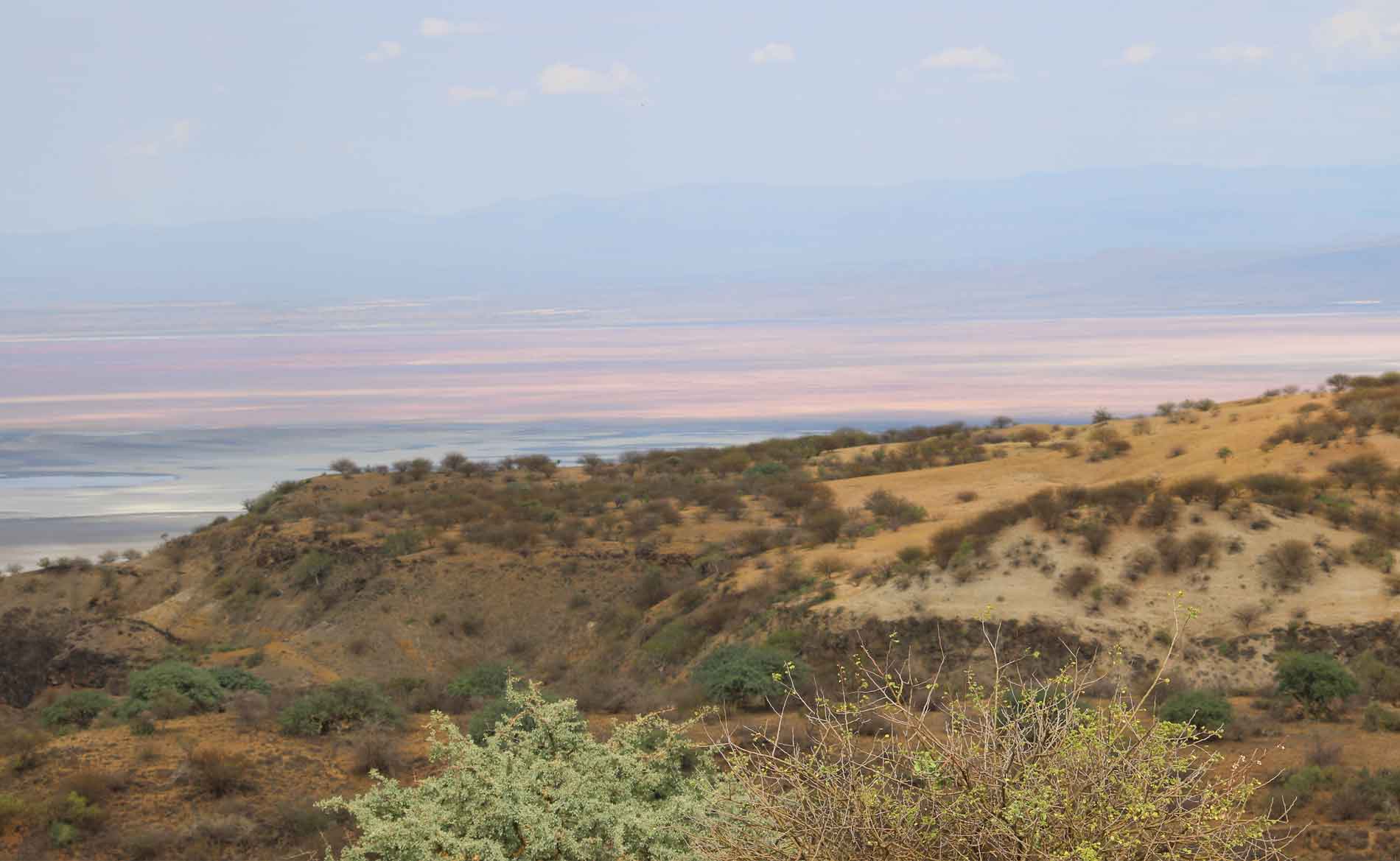Lake Natron and Ol Doinyo Lengai: Spectacular scenery and the largest breeding ground for lesser flamingos in East Africa
Facts Lake Natron:
- Unique natural region with extremely high soda content, unique red coloration and the largest breeding ground for lesser flamingos in East Africa
- Area between a few square kilometers and up to 1,040 km2 depending on the water level at high water = larger than Berlin at a maximum depth of only 3 meters and water temperatures of up to over 50 degrees Celsius
Facts Ol Doinyo Lengai:
- 890 meter high, active volcano not far from the shores of Lake Natron
- Sacred mountain of the Maasai tribe, Ol Doinyo Lengai means “mountain of God” in their language
Best time to visit:
- You have the best chance of seeing flamingos between July and September
- From June to the end of the year it is dry most of the time and therefore easy to visit the area around Lake Natron
- From January to March it can rain and make the journey and the Ol Doinyo Lengai ascent difficult if necessary
- From April to May, a visit to Lake Natron can only be planned spontaneously, as the roads are sometimes impassable during the rainy season
Getting there from Arusha:
- About 220 km, which can take up to 5 hours due to the adventurous road conditions in places
Highlights Lake Natron and Ol Doinyo Lengai:
- Walk to Lake Natron with lots of information about the unique natural region
- Hike to the Engeresero waterfalls
- Ascent of Ol Doinyo Lengai and a look into the mouth of the active volcano
Lake Natron is a special natural phenomenon and to get straight to the point. It is a little off the beaten track and getting there involves a bit of bumping and dust, but it is definitely worth a visit for all bird lovers, hikers and active people, amateur geologists and anthropologists as well as the individual tourists among you who like less visited places.
Large quantities of sodium carbonate, also known as soda ash, are dissolved in the lake. This comes from the volcanic ash from the neighboring Ol Doinyo Lengai. The pH value of the lake, which is only a maximum of three meters deep, is between 9 and 10.5 due to the soda and the water temperatures are often above 40 and sometimes 50 degrees Celsius. These conditions favor the proliferation of special algae that only live in alkaline water. These algae cause the unique red coloration of the lake and form the food base for small so-called brine shrimp, which in turn are preferentially eaten by dwarf flamingos and also color their plumage reddish, pink. This phenomenon makes Lake Natron the largest breeding site for lesser flamingos in East Africa, at times even the only one during the year. In the high season from July to September, up to 2.5 million lesser flamingos can be observed. The best chance of seeing these cute birds, which like to stand on one leg and stick their heads in the water to feed on crayfish, is on a walk to the shores of the lake. Your knowledgeable guide will also take the opportunity to show you the 5,000 to 19,000-year-old footprints of homo sapiens on the southern shore of Lake Natron, which first attracted the attention of researchers in 2008. In addition to the guided walk to the lake, you can also scramble to the Engeresero waterfalls. The path leads along and repeatedly through a small river fed by the waterfalls and over the surrounding stones and rocks. Good footwear is therefore recommended and getting wet is guaranteed. However, given the temperatures in the area, this is a pleasant refreshment.
If you want to do even more climbing and hiking, climb the Ol Doinyo Lengai volcano. The day tour starts at around midnight and takes you up the approximately 1,000 meters to the top of the volcano. Contrary to the glistening temperatures during the day, it is really cold at night, so appropriate clothing is mandatory. Arriving at 2,890 meters around sunrise, you get a breathtaking view into the smoking maw of the volcano. On the descent back down the very steep path, you will have to slide on your bottom in places and hiking poles are definitely a must, along with good shoes and sure-footedness. When you arrive back at the starting point, even the fittest of you will definitely be ready for a shower and a break. Alternatively, the route can also be completed as a 2-day tour with an overnight stay in tents at the volcano.










